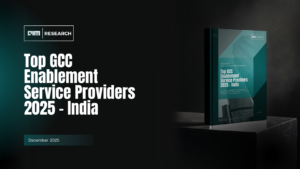In our increasingly digitized world, the specter of data breaches facilitated by the nefarious realms of the dark web looms larger than ever before. As digitalization permeates every sector, with the healthcare industry being particularly vulnerable, the urgency for stringent data privacy and security measures has reached unprecedented heights.
Recent statistics highlight the pervasive threat of data breaches facilitated through the Dark Web. Around 1,700 unique posts related to selling data breaches appear monthly, with common data including compromised accounts, databases, corporate infrastructure access, and personal information.
Notable 2023-2024 breaches involving data sold on the Dark Web include the exposure of over 800 million Indians’ personal data, personal data of around 73 million AT&T customers, data from half of France’s population due to medical insurance provider hacks, and the theft of 65,000 files from the Swiss government by ransomware gang Play.
The Dark Web’s role in fueling cybercrime is further evidenced by the sale of initial access to corporate networks and the rise of ransomware-as-a-service operations potentially linked to hacktivist groups.
Why Data Breaches Happen
The motivations behind data breaches are varied but generally revolve around financial gain, competitive advantage, or political purposes. Financially motivated attackers sell stolen data on the dark web, where personal information, credit card details, and login credentials are highly valued commodities. The commodification of personal and corporate information has led to a thriving black market on the dark web.
Common Causes of Data Breaches
Weak and Stolen Credentials: Compromised passwords are a leading cause of data breaches. Many users rely on simple or reused passwords, making it easier for attackers to gain unauthorized access. In 2023, 86% of data breaches involved the use of stolen credentials.
Insider Threats: Employees or contractors with legitimate access to sensitive data can misuse their privileges, either maliciously or accidentally. Insider threats accounted for 19% of breaches in 2023.
Malware: Malicious software can infiltrate systems through phishing attacks or vulnerabilities, leading to data theft or system compromise. In 2022, there were 5.4 billion malware attacks globally, with 92% delivered via email.
Social Engineering: Attackers manipulate individuals into divulging confidential information or performing actions that compromise security. Phishing attacks increased by nearly 60% in 2023.
Application Vulnerabilities: Unpatched software and misconfigured systems can provide entry points for attackers. Exploitation of vulnerabilities was involved in a significant number of breaches.
Physical Theft: Loss or theft of devices containing sensitive information can lead to data breaches. Physical attacks, though less common, still pose a risk.
Where Compromised Data Ends Up
When a data breach occurs, the stolen data often finds its way to the dark web, a hidden part of the internet that requires specific software to access and is not indexed by traditional search engines. The dark web serves as a marketplace where cybercriminals buy and sell stolen data anonymously.
Here’s a detailed look at where compromised data ends up and how it is utilized:
Combo Lists: Combo lists are collections of usernames and passwords that have been stolen from various data breaches. These lists are highly sought after on the dark web because they can be used in credential stuffing attacks, where attackers use the stolen credentials to gain unauthorized access to multiple accounts. Since many individuals reuse passwords across different services, a single compromised password can lead to multiple account breaches.
Stolen Credit Card Information: Credit card details are among the most commonly traded items on the dark web. Cybercriminals use this information to make fraudulent purchases or sell it to others who do the same. These transactions are typically conducted using cryptocurrencies to maintain anonymity. The sale of credit card information is a lucrative business, and such data often comes with accompanying personal information to make it more valuable.
Personal Identifiable Information (PII): Personal Identifiable Information (PII), such as names, addresses, social security numbers, and birthdates, is also frequently traded on the dark web. This information can be used for identity theft, creating false identities, or conducting further attacks. For instance, attackers can use PII to open new bank accounts, apply for loans, or commit other forms of fraud.
Medical Records: Medical records are another highly valued commodity on the dark web. They contain comprehensive personal information, including health histories, insurance details, and other sensitive data. This information can be used for medical fraud, obtaining prescriptions illegally, or even blackmail. The theft of medical records poses significant privacy risks and can have long-lasting impacts on victims.
Corporate Data: Corporate data, including trade secrets, intellectual property, and confidential business information, is also a target for cybercriminals. Such data is often sold to competitors or used to blackmail the affected organization. Leaked corporate data can lead to significant financial losses, damage to reputation, and legal consequences for the affected company.
Financial Information: Stolen financial details, including credit card numbers, bank account information, and payment details, are commonly traded on the dark web. Cybercriminals use this information to make unauthorized purchases, commit fraud, or engage in money laundering. The financial loss to victims can be substantial, and recovering from such incidents can be a lengthy and difficult process.
Login Credentials: Usernames, passwords, and email addresses obtained from data breaches are valuable commodities on the dark web. This information is often used in credential stuffing attacks, where attackers use the stolen credentials to gain unauthorized access to multiple accounts, particularly if the same credentials are reused across different services. This can lead to further data breaches and identity theft.
Preventative Measures
To combat the threat of data breaches, organizations can implement several preventative strategies:
Strong Password Policies: Enforcing the creation of complex passwords, using two-factor authentication, and regularly changing passwords can significantly enhance credential security.
Update and Patch Systems: Regularly updating and patching software and systems to fix known vulnerabilities is crucial. A significant percentage of breaches occur due to unpatched systems.
Robust Access Controls: Implementing strict access controls ensures that only authorized individuals can access sensitive information, minimizing the risk of unauthorized access.
Dark Web Monitoring: Utilizing dark web monitoring services can help organizations detect compromised credentials and other sensitive data on the dark web, enabling them to take swift action to mitigate potential damage.
Incident Response Planning: Having a well-defined incident response plan allows organizations to quickly and effectively respond to breaches, minimizing their impact.
Final Thoughts
Data breaches are a pervasive threat in our increasingly digital world, with the dark web playing a central role in the proliferation of stolen data. By understanding how breaches happen, why they occur, where compromised data ends up, and implementing robust preventative measures, organizations can better protect themselves against these threats and safeguard their sensitive information. Continuous monitoring, strong security policies, and proactive incident response are essential components of an effective cybersecurity strategy.





